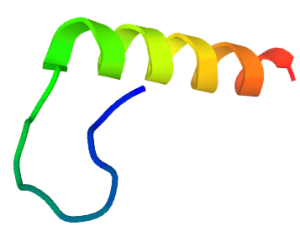
Short Peptide Folding
How does the amino acid sequence of a protein chain determine and maintain its 3D folded state? How do small proteins fold?
Short Peptide Folding
Many small proteins or miniproteins are peptides shorter than 40-50 residues with stable folding that contain secondary structure elements such as alpha helices and beta strands.
An autonomously folding, 35-residue, thermostable subdomain (HP36) of the villain headpiece is the smallest folded domain of a naturally occurring protein. Polypeptides simplify the protein-folding problem. They allow in-depth examinations of sequence-structure-stability relationships without using the complex larger proteins.
In this recent study, Rocklin et al. designed sequences intended to fold into desired structures. The novel proteins may be helpful in bioengineering or pharmacological applications.
Check the paper from here: https://goo.gl/Tregb7
http://science.sciencemag.org/content/357/6347/168
